
Their journey: Older and Future Generations – Perspective towards slow fashion around the world.
When we talk about sustainability, not all people have the same awareness and level of sustainability, especially the slow-fashion practices. It is a common assumption that older generations seem more reluctant to change or unconscious about sustainability due to the understanding and knowledge regarding the negative impact of the fast-fashion industry is still lacking. To know more about this issue, I interviewed my friends and their parents who live around the world, such as South Korea, Hongkong, Thailand, etc., and how both generations have different perspectives and levels of awareness towards sustainable fashion issues.
Habin Cho’s Mother – Seoul, South Korea
South Korea is considered as one of the countries with people having a good sense of fashion. Mrs Cho stated that people’s perspective of slow fashion in South Korea is inferior as Koreans are well known for pursuing trends and comes in and goes out very quickly within a short period. Most Koreans will choose fashion over sustainability. This could be because of the creative and entertainment industry and social stereotype that second-hand clothes may not be fashionable or outdated. They get allured in a trend but then get bored quickly, which triggers fashion industries to endlessly create new trends.
Cho Habin’s mother thought keeping up with fashion trends and shopping for fast fashion clothes is beneficial and helps fulfil her happiness by decorating herself and helps her to conform to the society. During the online interview, she stated that she never bought any second-hand clothes or bags, as she felt reluctant to buy clothes that someone had worn before due to hygiene matters. As a person who reads Korean news every day, people in South Korea have more awareness about sustainability, but she has never seen any news that supports and talks about slow fashion. Moreover, Koreans tend to follow the trend that goes viral. Using reusable cups and paper straws became a popular trend because it started from Starbucks with high brand value in Korea, and it became viral on social media. Unfortunately, Korean companies still lack behind when it comes to implementing environment-friendly decisions. When a foreign multinational company like Starbucks starts first, then the rest will follow. Mrs Cho added that if a famous multinational slow-fashion company goes viral in Korea, people will realise the current fast fashion situation and the trends will arise. If this happens one day in Korea, she may also be interested and follow the trend. However, if this does not happen, it is unlikely that she will implement sustainable fashion as long as she lives in Korea.
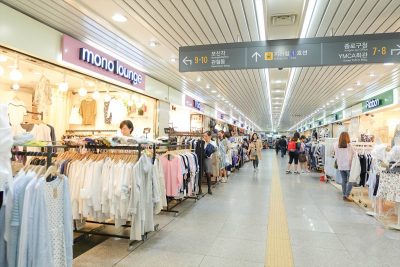
Underground Shopping Market that commonly found in subway line across Seoul | Source: @koreantoyou
Callista Tesalonika’s Father – Jakarta, Indonesia
Living in a capital city, Dewo Triatmoko, an Indonesian Banker, thinks that implementing slow-fashion practices is unnecessary. The social constructed or negative stigma towards slow fashion is considered taboos that relate to poverty or uncleanliness among the older generation in Jakarta. When it comes to clothing, Mr Dewo thought that the perception of slow fashion or thrifting is always linked to low-income communities who cannot afford new clothes. Mr Dewo also stated that he never considers purchasing ethical fashion since one of the biggest thrift markets in Jakarta, called Pasar Senen, is a traditional flea market, which most of the time is way too packed. He thinks Pasar Senen has inadequate infrastructure and is not accessible from his location since it is in the middle to lower class neighbourhood. Hence, Mr Dewo said, he is unwilling to go to the traditional flea market for the sake of being sustainable.
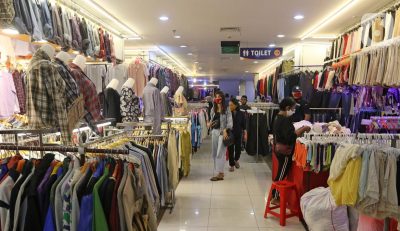
The situation of the biggest flea market in Jakarta, Pasar Senen | Source: Herman Zakharia
Yaya Wanvisut’s Mother – Bangkok, Thailand
Thailand is well-known for its fast-fashion, garment industry and high-quality Thai silk that contributes to its economy. Yaya’s mother is a fashion enthusiast from Bangkok, the heart of the city. During the interview, Mrs Wanvisut stated that she likes to follow the current trend in fashion. Every new season, she must at least purchase one or two clothing items or bags from a fast-fashion company or high-end designer brand. She does not have the interest in the second-hand items because it is not stylish and fashionable. Throughout the interview, she seems does not have an awareness of the environmental impacts of the fashion industry.
Moreover, Mrs Wanvisut said there has never been any campaign about fast fashion and its negative impact from the Thai government. She stated that Thai people have inadequate information about sustainable fashion practices. However, if the right campaign about the issue is called out repeatedly, she thinks people around her age will have more awareness about the fast fashion issue.
“Thailand is home to over 2,000 garment companies that employ between 800,000 and one million workers, according to global non-profit Fashion Revolution”-(Anansuviroj, 2020)
Riley Huntington’s Father – Brisbane, Queensland
Living in the suburb area of Brisbane, Riley’s father think that ethical fashion may lead to overconsumption since the price offered is way cheaper than the fast fashion industry. He saw the phenomenon of thrifting trends where the youngsters or influencers making it a challenge, which might be a bad influence that leads to overbuying. He added that even though the youngsters have a good intention to implement the slow-fashion sustainable practices, the thrift hauls trend they are promoting is not environmentally conscious. Moreover, he thinks that the price range of second-hand items is rising due to market demand because of the phenomenon. Hence, when the prices are rising, people from the low-income communities might be disadvantaged since supposedly, they are the primary target market for this second-hand industry. As a closing statement, Mr Huntington said – “fashion choices might help build a sustainable future, but you need to be mindful of the “sustainable” shopping consumption”.
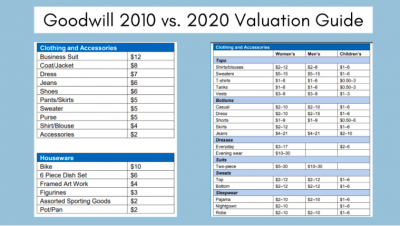
Goodwill Thrifting Price in 2010 vs. 2020 | Source: Lily Fang
Angel Leung’s Mother – Tseung Kwan O, Hongkong
Hongkong has undergone a dramatic transformation from refugee heaven to a textile manufacturing base to the global financial centre (Ngai, 2020). When asked about the best-kept fashion secret in Hongkong, Mrs Leung answered, Sham Shui Po area, which is her go-to shopping district. Sham Shui Po is a fabric market located in the Kowloon district (DiSalvo, 2021). Mrs Leung said, apart from selling fabrics, the area is also known for their fast-fashion, high-end brands, local designers, and last-minute fashion trend at a low price are available at Sham Shui Po. From her perspective, Mrs Leung said that she is reluctant to purchase slow-fashion items because she rarely buys fast-fashion clothing items. With her type of buying behaviour, she thinks that she will not contribute that much emissions and pollutions to the environment. Moreover, with the current pandemic circumstances, Mrs Leung also questions the hygiene of second-hand items as they might become germ, bacteria, and virus transmission when sold to the customers. She added that second-hand items might cause illness to your household since most sellers did not implement the proper cleaning or laundry procedure before selling them.
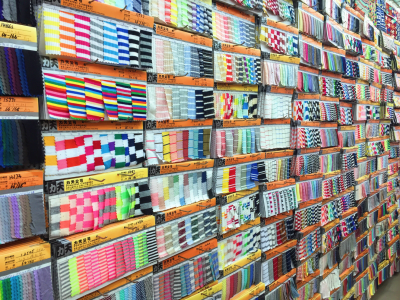
Variety of Fabrics at Sham Shui Po | Source: Melanie DiSalvo
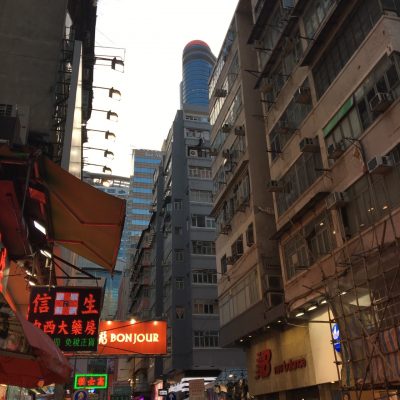
Sham Shui Po District in Hongkong | Personal documentation
Now, let’s get to know more from the children about their perspective towards sustainable fashion….
Habin Cho – Seoul, South Korea
Habin Cho recently started to think about the fast-fashion issue as she was interviewed by such questions a few months ago. It was her first time thinking that the fast-fashion industry may be extremely toxic. Nowadays in South Korea, a mobile application called carrot market, is a big trend, and this app allows people to sell whatever they have without any limitations. Therefore, almost any products are available in the carrot market. She said that the carrot market is very convenient for a sustainable fashion newbie like her. Habin purchased few clothing items for testing the mobile app since most of the clothes on the carrot market are suited to the fashion style that she would go for.
Furthermore, there are some thrift shops available in Seoul. She thinks that people who are into vintage and gets attracted to the fact that thrift shops are cheaper than non-thrift shops will continuously shop there. When asked about the advantage of purchasing slow fashion, she said that it will minimise emissions because we live in a society where supplies overload more than the demand. Unchosen and unnecessary products are being produced and being wasted, she added.
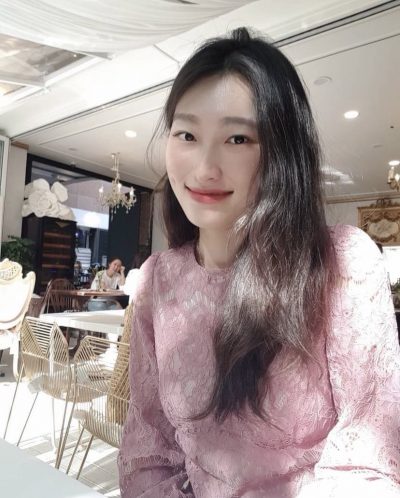
Habin Cho in Seoul, South Korea
Callista Tesalonika – Jakarta, Indonesia
Callista is one of my closest friends of mine. Ever since the first time I met her, she consistently implemented the sustainable approach in her daily life, such as cutting dairy products or meats and thrifting. She said there is a subconscious sustainability awareness in Jakartan households. For example, Jakartans tend to use our shirts as pyjamas instead of buying clothes exclusively for pyjamas or utilise unwearable old fashion items for wiping cloths. Moreover, there is a fashion trend to buy and use vintage or thrift garments. There were even annual events in Jakarta that focused on collective thrift clothing. In practice, Jakartans have various daily habits that consider as awareness of fashion sustainability. She also thinks that the understanding and knowledge regarding the impact of sustainability in the fashion industry for Jakarta’s older generation is still lacking. The older generation still did not aware of how systematic and dangerous effects of fast fashion.
However, she believes there is hope for a better future in Jakarta concerning this issue. More Jakartans youngsters, like herself, have more awareness and willingness to change for fashion sustainability. Youngsters recognise the responsibility to buy fewer clothes and wear more high-quality slow fashion garments. She notices that today the younger generation is making thrifting trendy. Callista also joins this bandwagon as more of her acquaintance are accepting of the use of thrift clothes. Thrifting became part of her routine where if she went out of the city, she would look for the local thrift store to stroll around instead of going to the mall and purchasing fast fashion brands. As her closing statement, she believes that she is not the only Jakartan youngster with a similar passion for becoming more fashionable yet sustainable!

Callista Tesalonika wrapped in a thrifted clothes from head to toe.
Yaya Wanvisut – Bangkok, Thailand
Yaya is an international student in Brisbane coming from her hometown, Thailand. She described that Thai people have enough awareness about the fast fashion issue compared to the past. Yaya said there is a trend these days where the Thai population wear vintage clothes because the thought of wearing vintage clothes will look cool and edgy. Yaya stated that she likes to purchase sustainable fashion items as it is an alternative to fast fashion, plus it also saves a lot of money. She has a high level of awareness regarding the negative impact of fast fashion since she explained that the fast fashion industry is associated with water pollution, microfibers pollution in the ocean, and waste accumulation.
From her point of view, the mass production of most fast fashion brands produces clothing items in developing countries through exploiting impoverished areas for both natural and human resources. This cause negative consequences on the environmental impacts of fast fashion, which are the depletion of non-renewable sources and emissions from the production. Lastly, she feels confident that she can enforce sustainable fashion in her everyday life through; buy less clothing, buy versatile, purchase clothing items from sustainable and transparent brands!

Yaya Wanvisut from Bangkok, Thailand.
Riley Huntington – Brisbane, Queensland
Living in Australia’s third most populated city, Riley said that she has been aware of the negative impacts of fast fashion ever since her middle school year, as her older sister was very passionate about the issue. She found that thrift clothes are cheaper, full of unique items, yet of good quality. She also highlighted second-hand clothes are more environmentally friendly as it helps reduce waste. Riley enthusiastically said that fast fashion is one of the most wasteful industries on the planet that contributes poorly to emissions. If fast fashion is significantly reduced, she thinks it will help reduce emissions and waste.
Although she does not think the government in Australia has ever really focused on this industry, because she has never seen many campaigns or information related to the issue. Nevertheless, she thinks when the government makes people pay attention to things like the environment and slave labour, people will have to become more open to slow fashion if they wish to make a difference and encourage good practices. Riley stated that younger generations generally care more about the negative impacts and spread awareness in the community. Additionally, to achieve her sustainable “goals”, she said she will try to maintain her current approach and put more effort into being aware of local thrift stores around her.

Riley Huntington from Brisbane, Australia
Angel Leung – Hongkong Island, Hongkong
In contrast with her mother, Angel usually goes to the thrift market in Hongkong to buy second-hand clothes once within three months. She answered that the fast fashion industry will cause air pollution during the production process, polluting the water and using a large amount of energy. Angel has been conscious about it since a long time ago because there is a lot of news and information on the internet, and she pays attention to it. However, she said that Hongkongers lack attention and awareness on slow fashion because it is more convenient for people to buy from the fast fashion industry, as Hongkong is famous for their cheap clothes and fabric. Additionally, Angel said that the Hongkong government still lacks recognition to bring this topic to the public. Without any information and education on the importance of fashion sustainability in Hongkong, people cannot understand why promoting and implementing slow fashion is essential if the government or NGOs did not create the fashion sustainability campaign. In the end, she believes that it is possible to change Hongkongers’ behaviour and increase their level of awareness if there are more promotions or campaigns regarding the issue coming from the government.

Angel Leung from Hongkong.
As we already delve into the older generations’ perspective about sustainable fashion, we have few reasons that hinder them from implementing and purchasing sustainable fashion. Among the respondents, hygiene matters, inaccessible places, lack of awareness, and social constructed stigma are the main reasons they unwill to become proactive towards sustainable fashion. Even though sometimes it feels like we are pessimistic for the future of our environment, the younger generations make us realise, indeed, we have hope for a better future!
The younger generations are seen more environmentally conscious and actively vocal about sustainability since they are willing to stand up for a healthier, environmentally friendly, and sustainable future. Talking to my friends around the world has opened my eyes, and I feel the sense of belonging within the community that many people around my age strive for a sustainable future. People need to take a proactive approach since small lifestyle changes might create a big sustainable impact on the environment.
References
Anansuviroj, S. (2020). Can Thailand ever fix its relationship with fast fashion?. Bk.asia-city.com. Retrieved 15 October 2021, from https://bk.asia-city.com/shopping/news/can-thailand-ever-fix-its-relationship-fast-fashion.
DiSalvo, M. (2021). Complete Guide to Fabric Market Shopping in Sham Shui Po. virtue + vice. Retrieved 13 October 2021, from https://shopvirtueandvice.com/blogs/news/sham-shui-po-fabric-shopping.
Fang, L. (2020). The Gentrification of Thrifting: Is Thrifting + Reselling Ethical?. imperfect idealist – travel & running blog. Retrieved 13 October 2021, from https://imperfectidealist.com/is-thrifting-and-reselling-ethical/.
Ngai, B. (2020). Hidden Hong Kong: Fashion trends through the decades. Localiiz. Retrieved 13 October 2021, from https://www.localiiz.com/post/culture-history-hong-kong-fashion-trends-decades.
